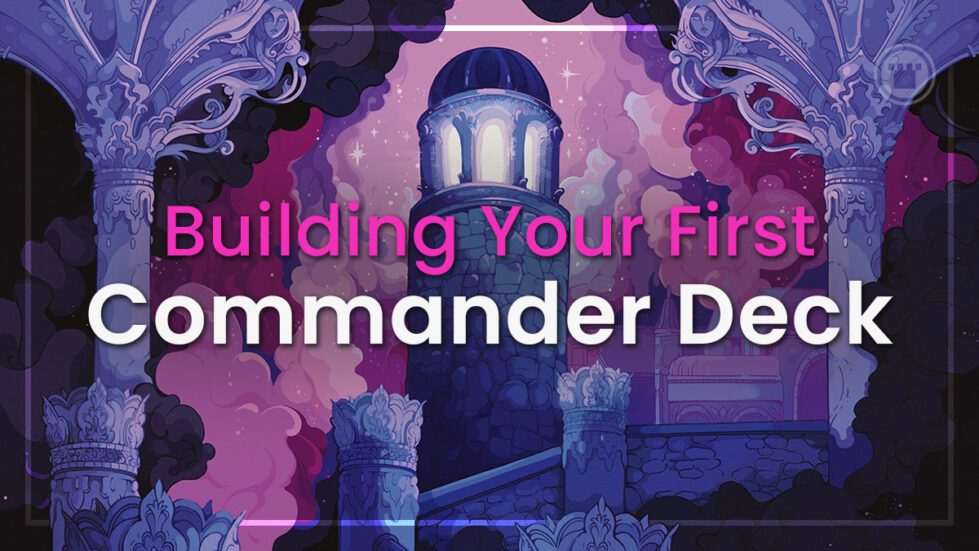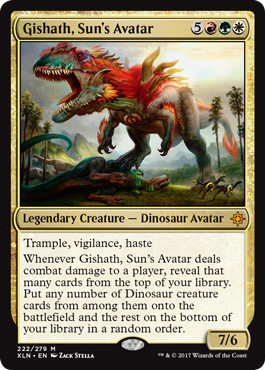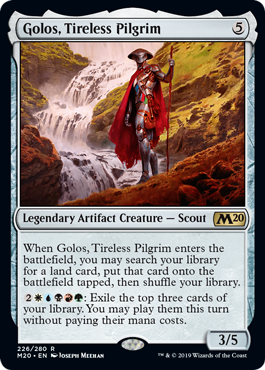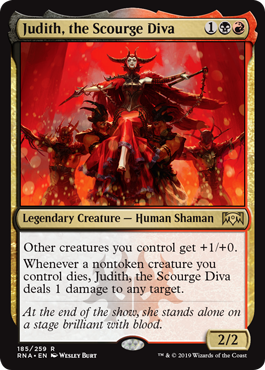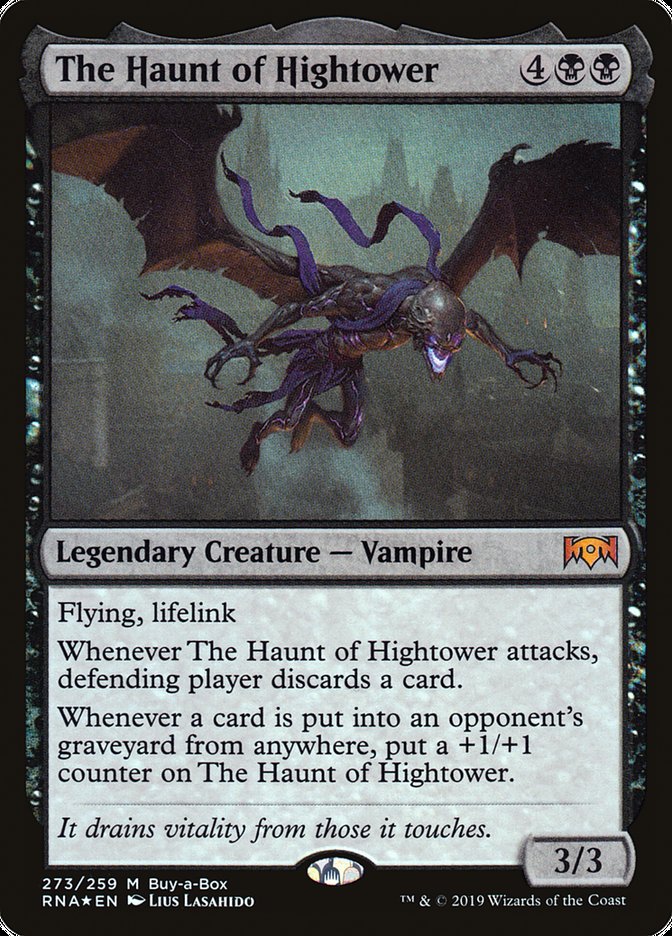Commander is a format that draws on the entire history of Magic for its card pool. This makes it exciting, since you can build a fun and functional deck around any commander or archetype. But it can also be overwhelming, especially if you’re new to the format. Here are some tips for building your first Commander deck in a way that makes the sheer size of the format less scary.
Start with the Commander
You’ve probably got some legendary creatures in your card collection that look like they do something really cool, but you’ve never had a deck to put them in. Maybe there’s a creature that showed up in a recent prerelease pool that you couldn’t find enough support for. Maybe you picked one up in a Conspiracy draft and have been eyeing it ever since, wishing it were Standard-legal. Maybe your legendary creature was Standard-legal once, and you’ve missed playing with it ever since it rotated. That creature can be the commander of your deck.
You don’t have to start with the commander to build every Commander deck, but it’s a good way to begin to define what your deck will do. For example, my current favorite commander is Gishath,
Sun’s Avatar, which benefits from having a lot of other dinosaurs in the same deck. It also includes cards like Kinjalli’s Caller and Commune with Dinosaurs that make dinosaurs easier to cast early on.
Your commander also limits what cards you’re allowed to use. The colors of spells in a Commander deck are limited to its commander’s color identity, which is determined by the mana symbols in the casting cost and ability costs of the commander. For example, you can play only black, red, and colorless cards in a Judith, the Scourge Diva deck, and you can play cards of any color in a Golos, Tireless Pilgrim deck. Golos is colorless, but their activated ability costs WUBRG, which makes them a five-color commander.
Color Identity
Here are a few things to keep in mind about color identity:
- Ability costs count toward the color identities of ALL cards, not just commanders. So you can’t play Gravel-Hide Goblin in your Judith deck, because it has green in its identity.
- A card with a hybrid cost counts as both colors. So you can’t play Kiora, Behemoth Beckoner in your Gishath deck, because she has blue in her identity.
- Phyrexian mana counts as the color in the background of the Phyrexian symbol. So you can play Birthing Pod in your Gishath deck, but not in your Judith deck, because it’s green.
- Mana symbols in reminder text don’t count toward a card’s color identity. So you can play Basilica Screecher in your Judith deck, because it’s black and not white.
- You can only use lands that produce the colors in your commander’s color identity, or that can produce colorless mana or mana of any color. So you can’t play Memorial to Genius in either your Gishath or your Judith deck, because it’s blue.
- If your commander has only colorless mana symbols, such as Karn, Silver Golem or Ulamog, the Ceaseless Hunger, you can only use lands that produce colorless mana. The only basic lands you can include in a colorless deck are Wastes. You also can’t use cards with Devoid in a colorless deck, since they still have colored costs.
Choosing Cards
It’s a good idea to start building your deck with cards you already own. Not only does that reduce the cost of buying all the cards you need, but a lot of them will already be cards you enjoy playing. When you run out of cards that do what you want, look around the internet and see if anyone else has built a similar deck. (EDHREC.com is a great resource!) You may not want to copy other people’s decklists, but they’re a good source of relevant advice.
Your deck should be about one-third land. You can add a little more if you’re using three or more colors, or a little less if you’re in a single-color archetype like Goblins that relies on cheap creatures. As in most formats, a majority of your spells should be creatures, unless you’re using a commander that wants you to have lots of noncreature spells like Narset, Enlightened Master.
Keep an eye out for abilities that interact well with your commander. For example, if you’re using a commander like Gishath that cares about a single creature type, include cards like Icon of Ancestry that let you choose a creature type to apply an effect to, as well as cards that care about your specific creature type (like Thunderherd Migration in the case of Gishath). If your commander cares about a specific type of mechanic, focus on including cards with that mechanic. For example, The Haunt of Hightower benefits from cards entering your opponents’ graveyards, so you’ll want to focus on cards that destroy your opponents’ permanents, like Finale of Eternity, and cards that make them discard, like Awaken the Erstwhile.
Make sure you have about 10-15 cards’ worth of removal in your deck. Commander games can be very long, and you won’t have a chance to sideboard against your opponents’ decks. (Commander matches are typically played as best-of-one games.) Sometimes this removal can be built into your deck’s strategy, such as Thrashing Brontodon in a Gishath deck or Murder in a Haunt of Hightower deck. In other cases, you’ll have to make room for it by cutting other cards.
The Brew Goes On
Building a Commander deck doesn’t have to be something you do once and then are done with. Future Magic sets may have new cards that fit perfectly into your strategy. Keep an eye out for them, and don’t be afraid to make small changes to your deck between games. Remember that the point of Commander is to have fun and try new things. If you play your deck a few times and find that a card you were excited about doesn’t work as well as you wanted it to, you can just take it out and try something else.
Are you new to Magic and want more content teaching you about the game? Sign-up for our emails and we’ll make sure you’re in the know about new content!

Alex is an Azorius bureaucrat who dreams of joining the Selesnya Conclave. Their favorite color of mana is green, and they love brewing for Commander variants.

